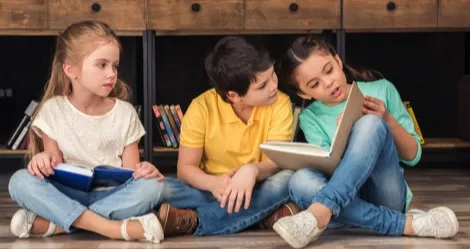
50 Children’s Books About Diversity That Celebrate Our Differences
We need children’s books about diversity because the world is a diverse place. It’s packed full of people living dramatically different lives, even within the same neighborhood or classroom. In order to raise kids in this world, we need to teach them about people outside of their immediate family. On the other hand, some kids grow up not seeing themselves or their family represented in any of the books they read or the TV shows and movies they watch. This is the importance of mirrors and windows: mirrors to see ourselves reflected in the world, so we don’t feel alone, and windows to see outside of our own lives, to recognize the humanity of other people. That is why we have compiled a list of 50 children’s books about diversity.
The importance of raising kids to be anti-racist and inclusive of all differences has only become more apparent as Black Lives Matter has become an everyday news story, and more people than ever have become aware of institutional racism and other forms of oppression. It’s not enough to talk about this only when it makes the news, though. To prevent kids from growing up to adopt the everyday racism, heterosexism, and ableism that is all around them, we have to educate them about a better way to see the world.
By reading these books together, you can start a conversation about the world and all the different kinds of people in it. These books explain that differences are something to be celebrated, not feared or made fun of. Whether you’re a parent trying to raise an activist kid, a teacher trying to create an inclusive classroom, or you’re just trying to introduce a different worldview to your niblings, you’ll find plenty of options on this list!
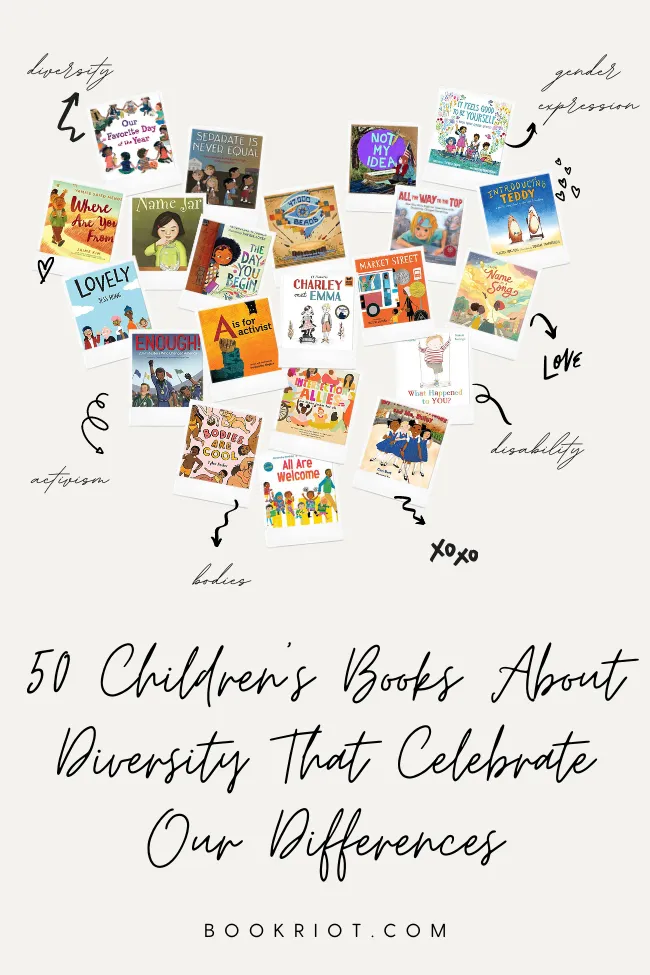
As I began to research this topic, I quickly realized this could get out of control, so I made the parameters pretty strict: these are all picture books (and a few board books)—depending on the book, the age range is 1–8. I also avoided books that are metaphorical (like Brick by Brick by Giuliano Ferri, Red: a Crayon’s Story by Michael Hall, or Not Quite Narwhal by Jessie Sima) in favor of books that have literal representation.
Finally, I tried to stick to books that don’t just include a diverse cast, but actively teach about diversity and inclusion. I do think that books like Everywhere Babies by Susan Meyers that include diverse families without actively teaching about diversity are also great additions to any kids’ library, as well as general books about celebrating difference, like It’s Okay To Be Different by Todd Parr. For the purposes of this list, however, I have stuck to these terms, and I’m mostly concentrating on racial and cultural diversity as well as disabled and LGBTQIA+ representation.
Children’s Books About Diversity and Inclusion (in General)
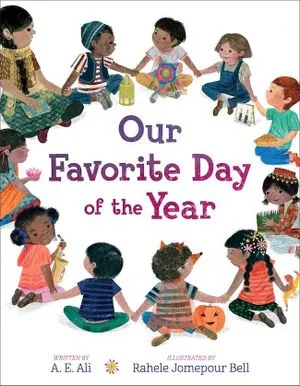
Our Favorite Day of the Year, written by A. E. Ali and illustrated by Rahele Jomepour Bell
It’s the first day of school, Ms. Gupta’s favorite day of the year! Musa isn’t feeling excited about it, though: he doesn’t know what he has in common with the other kids. As the school year goes on, though, they learn about each other’s favorite days, including Eid al-Fitr, Rosh Hashanah, Las Posadas, and Pi Day! The more they learn about each other, the more it brings them together. This is a great one for school classrooms or libraries, especially to introduce a unit about different holiday celebrations. The author has a handy chart of the all the holidays happening in the background of each page.
All are Welcome, written by Alexandra Penfold and illustrated by Suzanne Kaufman
This a perfect book for classrooms, because it depicts a group of kids in a day at their school. They come from a wide range of cultures, and they share these cultures with each other through food (at lunch), music, art, and their stories. All are Welcome shows how these differences are their community’s strength. Not only are different cultures and races represented, there are also disabled kids as well as a variety of family configurations shown.
The Day You Begin, written by Jacqueline Woodson and illustrated by Rafael López
“There will be times you walk into a room and there is no one quite like you…” Angelina feels uncomfortable in her class, because all her classmates are talking about the exciting places they traveled to over the summer. She was home, taking care of her sister, and she feels awkward and alone. Soon, though, it becomes apparent that we all have times when we feel different, but by sharing our stories, we can always find points of connection as well, and that those differences are something to be celebrated, not hidden.
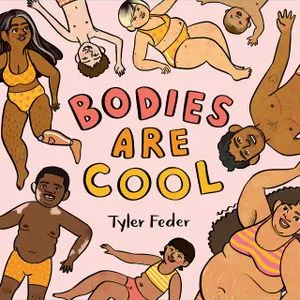
Bodies are Cool, written and illustrated by Tyler Feder
This is a perfect readaloud book, with its flowing style and upbeat rhyming structure: “Lanky bodies, squat bodies, / tall, short, wide, or narrow bodies, / somewhere-in-the-middle bodies, / bodies are cool!” It shows all kinds of bodies, including fat bodies, bodies of all races and skin tones, disabled bodies, and more! The illustrations and rhythm will captivate preschool readers!
Lovely, written and illustrated by Jess Hong
I have completely fallen in love with this book. It shows a huge diversity of people, all described as “lovely.” The simple, minimal text shows opposites: “black”—represented by a white woman in all black, “white”—a black woman with white hair, but includes them all under the umbrella of “lovely.” There are gender non-conforming people shown, different races, a person with a prosthetic leg (playing soccer—the depiction of the word “sporty”), and person in a wheelchair. One page shows braces spelling out lovely, while another has a unibrow shaped into the word. I’ll admit, the page that shows someone with hairy legs wearing red high heels with the text “Fancy” underneath made me want to buy a copy for my personal collection.
IntersectionAllies: We Make Room for All, written by Chelsea Johnson, LaToya Council, and Carolyn Choi, illustrated by Ashley Seil Smith
This one comes recommended by Roxane Gay: do I need to say anything more? Just in case I do, this is a book teaching how to embrace difference and support others, all told in a rhyming style. It includes many different types of diversity, and it has a refugee character and a genderfluid character. It starts an introduction by Kimberlé Crenshaw, who coined the term “intersectionality”!
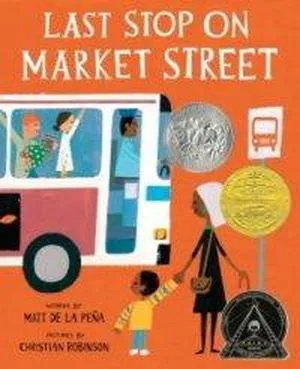
Last Stop on Market Street, written by Matt de la Pena and illustrated by Christian Robinson
I was surprised to see this was only published in 2015, because I think of this as a classic picture book. (It won the Newbery and Caldecott the same year, so you can’t get much higher recognition in the kidlit world.) This follows CJ as he rides the bus with his grandmother after church. As he comments (and sometimes complains) about their community (why doesn’t he have an iPod? Why do they have to go through the “dirty” part of town?), she lovingly chastises him and points out the beauty of the world around them. Some readers might object to the “incorrect grammar,” but that might be an opportunity to talk about AAVE and that just because someone speaks differently than what you might be used to, that doesn’t mean they’re wrong.
A is for Activist and Counting on Community, written and illustrated by Innosanto Nagara
It’s never too early to start teaching kids about inclusion and diversity! So why not gift Innosanto Nagara’s board books the next time you attend a baby shower instead of Goodnight Moon? Not only does A is for Activist teach about activism in an ABC rhyming format, it’s also populated by a wide range of people being represented! Counting on Community is a great way to introduce the idea of a diverse and close-knit community and what being a good community member means (while also teaching numbers!) Once they’ve got the basics down, you can move on to Oh, the Things We’re For, which is a Nagara picture book about fighting for change.
Enough! 20 Protesters Who Changed America, written by Emily Easton and illustrated by Ziyue Chen
Enough! showcases some of the people throughout history (in the USA) who fought for their freedom. While it includes events like the Boston Tea Party, it centers the stories of activists like Martin Luther King Jr. and Harriet Tubman, as well as the protesters and activists still fighting today, like Jazz Jennings and Colin Kaepernick. It also includes a foreword from a survivor of the Marjory Stoneman Douglas high school shooting.
Books Featuring Racial or Cultural Diversity
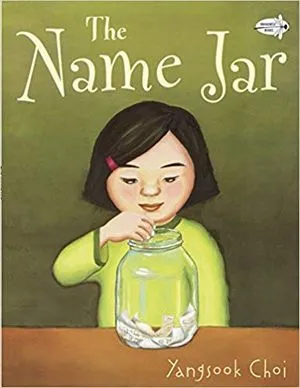
The Name Jar, written and illustrated by Yangsook Choi
Unhei has just moved to America from Korea. As she enters her new classroom, instead of introducing herself, she says she will be picking a new (“American”) name soon. Her classmates are intrigued by this nameless newcomer, and they fill a glass jar with suggestions, which she tries out. When one classmate visits her home and finds out her name and its meaning, the jar disappears. Unhei realizes that she doesn’t have to change her name to find acceptance and friendship in her new life.
Your Name Is a Song by Jamilah Thompkins-Bigelow
When a child comes home from school vowing never to go back, her mother discovers it’s because her classmates and teacher can’t pronounce her name: “it got stuck in her [teacher’s] mouth.” The mother explains that her name is a song to be celebrated. This story includes names from many cultures, each with a pronunciation guide, and encourages kids with these “hard to pronounce” names to say them with confidence. This is a great book for kids with names that differ from white Western conventions, but it should also be used to explain to all kids how important it is to pronounce each other’s names correctly.
The Sandwich Swap, written by Her Majesty Queen Rania Al Abdullah with Kelly DiPucchio, illustrated by Tricia Tusa
The Sandwich Swap makes a great introduction to the concept of celebrating differences, especially cultural differences. Lily and Salma are best friends that do everything together, but privately, they think the others’ everyday lunch is disgusting: peanut butter sandwiches vs hummus on pita. When the truth comes out, the entire cafeteria splits into these teams, and a food fight erupts, until Lily and Salma try each other’s lunches and realize that both are good. A little simplistic, sure, but a good conversation starter with young kids.
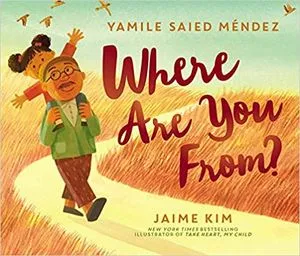
Where Are You From? written by Yamile Saied Méndez and illustrated by Jaime Kim
A young girl is frustrated by her classmates’ constant question: “Where you from?”–especially when they don’t accept her answer. When she talks to her abuelo, he explains where she’s “really from” in a lyrical answer drawing on their South American heritage, their family’s history in the USA, and the simple answer that he is from her heart. While this is about her acceptance and celebration of her identity, it should also be used to start a conversation with white children about why “Where are you from?” can be an invasive question.
Same, Same But Different, written and illustrated by Jenny Sue Kostecki-Shaw
A popular choice for teachers, Same, Same But Different compares the lives of two kid pen pals: Elliot in America and Kailash in India. They learn what they have in common (pets, taking a bus to school, living with their families) and where they differ, but these differences are celebrated, instead of being treated as a barrier to their friendship.
Magnificent Homespun Brown: A Celebration, written by Samara Cole Doyon and illustrated Kaylani Juanita
This poem is a love letter to the different kinds of brown skin can be, comparing them to beautiful and radiant shades in nature. The illustrations are gorgeous and the writing is lyrical–the vocabulary will be challenging for young readers, but the flowing language will keep them engaged. It also includes depictions of people of differenct races and skin tones as well as disabled people.
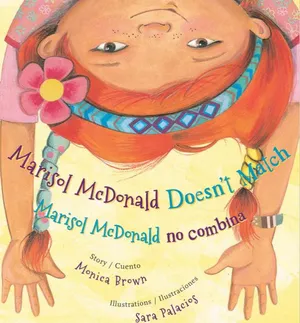
Marisol McDonald Doesn’t Match / Marisol McDonald no combina, written by Monica Brown and illustrated by Sara Palacios
Marisol is Peruvian-Scottish-American, and she celebrates every aspect of her identity. She has red hair and brown skin, speaks English and Spanish (the book is also available in both languages), and she eats peanut butter and jelly burritos for lunch and plays pirate princess soccer at recess. When she’s told she doesn’t “match,” Marisol tries to be all one thing, speaking only in English, eating PB&J sandwiches, and drops the “pirate princess” part of her recess activities. She fits in, but she is diminished and listless. A teacher writes her a note to tell her that she misses the Marisol she knows, and Marisol bounces back, embracing her whole, multi-faceted self.
Hair Love, written by Matthew A. Cherry and illustrated by Vashti Harrison
This book celebrating Black hair has since been made into an Oscar-winning short film! Zuri is proud of her hair with its “kinks, coils, and curls.” When her mom does her hair, it makes her feel confident and strong. When she is away, though, her dad steps up to style Zuri’s hair in a way that perfectly matches her style. Hair can be source of tension for Black girls in particular, and this title is a great way to show that everyone’s hair is different and that natural Black hair is beautiful–and can look lots of different ways!
Eyes That Kiss in the Corners, written by Joanna Ho and illustrated by Dung Ho
An unfortunate problem that still persists in children’s book illustrations are Asian characters distinguished by slanted/squinting eyes, so it’s refreshing to have a book like this to read instead. This is a story that celebrates the beauty of “crescent moon” eyes or “eyes that kiss in the corners.” When the main character feels self-conscious that her eyes don’t look like her classmates’, she realizes that she can see her eye shape in her family’s faces and that they link their generations together. Browsing through the Goodreads reviews, it’s evident how needed this book is by how many adults this brought to tears, especially in thinking about how their younger selves would have appreciated this story.
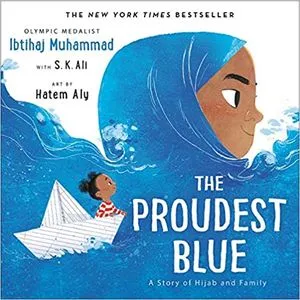
The Proudest Blue: A Story of Hijab and Family, written by Ibtihaj Muhammad with S. K. Ali and illustrated by Hatem Aly
Faizah is excited: today is the first time her older sister Asiya is wearing a hijab to school! Unfortunately, some of the other kids at school make negative comments. That just makes Faizah appreciate its beauty even more, though, and how it symbolizes tradition and cultural pride for their family. This is a much-needed resource for hijabi kids, but it also is familiarizes other kids with hijabs and their importance to many people. It’s a way into a conversation for all kids about appropriate and inappropriate questions to ask or comments to make when someone wears clothing that is unfamiliar to you.
Let the Children March, written by Monica Clark-Robinson and illustrated by Frank Morrison
Let the Children March is the story of the Children’s March in Birmingham, Alabama in 1963. When their parents couldn’t protest in fear of losing their jobs and not being able to provide for their family, Black children as young as nine marched to protest Jim Crow laws. They were met with a hostile police force who responded with water hoses, batons, and dogs set on them. This story focuses on the strength of these children, and how they contributed to history. This gives important context to conversations about diversity and inclusion, while showing how children have made a difference in their words and actions throughout time.
Separate Is Never Equal: Sylvia Mendez and Her Family’s Fight for Desegregation, written and illustrated by Duncan Tonatiuh
Almost a decade before Brown vs. Board of Education, Sylvia Méndez was denied enrollment to a “Whites only school.” Despite speaking perfect English, her parents were told she must must attend the “Mexican school,” which was further away and underfunded. The Méndez family fought back against this, and their fight helped end school segregation in California. A good touchstone for the history of diverse classrooms.

Dreamers, written and illustrated by Yuyi Morales
In Dreamers, Yuyi Morales draws on her own experience migrating from Mexico the U.S., trying to make a life with only herself and her infant son. Together, they found refuge in the library, and there, Morales learned English and was able to access resources to help her make a home in this new country. Dreamers also shows that despite leaving her possessions in Mexico, Morales carried with her her talents, skills, and dreams, which improve not only her own life, but also the lives around her. This title is also available in Spanish!
Stepping Stones: A Refugee Family’s Journey, written by Margriet Ruurs and illustrated by Nizar Ali Badr
Stepping Stones is a book inspired by the stone art of Syrian artist Nizar Ali Badr. It depicts a family who has a happy and loving life in Syria, until war turns their home into somewhere unfamiliar and unsafe. They are forced to flee, packing as much of their lives as they can carry. The unnamed family can serve as an everyperson story about refugees, and the collage art is surprisingly evocative.
We Are Still Here!: Native American Truths Everyone Should Know, written by Traci Sorell and illustrated by Frané Lessac
While it’s easy for conversations started from the titles above about immigration to veer into “We’re all immigrants” territory, it’s important to give kids a more accurate background to the history of North American and its population. We are Still Here! discusses both Indigenous history and ongoing activism in North America. This provides a foundation for kids to begin learning about contemporary Indigenous issues and the legacy of colonialism. I also recommend We Are Water Protectors, written by Carole Lindstrom and illustrated by Michaela Goade, for a specific focus on Indigenous environmental activism.
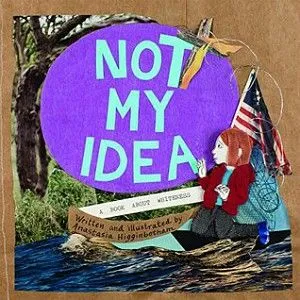
Not My Idea: A Book About Whiteness, written and illustrated by Anastasia Higginbotham
Ordinary Terrible Things is a series where Anastasia Higginbotham explains difficult topics to children (with titles like Death Is Stupid, Divorce is the Worst, and Tell Me About Sex, Grandma). In Not My Idea, a white child sees a news report about a police murder of a black victim. When she asks her family about it, they skirt around the issue. She begins to research at the library, and learns more and more about racism and white supremacy. This is painful, but necessary: “Connecting means opening. And opening sometimes feels…like breaking.” She learns how to fight against this ideology: Not My Idea teaches that racism and white supremacy are problems that white people have created, and we have a responsibility to fix them. At the end of the book, Higginbotham addresses any concerns about whether kids are too young to learn about this with the simple statements: “Innocence is overrated. Knowledge is Power. Get some. Grow wise. Make history.” (Check out the School Library Journal blog for a detailed review, as well as pages from the book that show the collage style illustrations.)
Children’s Books about Diversity featuring LGBTQIA+ Representation and Inclusion
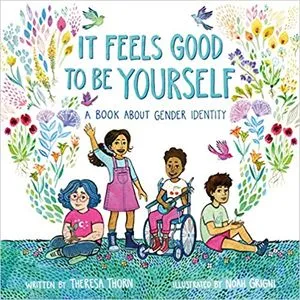
It Feels Good to Be Yourself: A Book About Gender Identity, written by Theresa Thorn and illustrated by Noah Grigni
This introduction to gender for young kids is written by a parent of a trans kid and illustrated by a non-binary artist. It is simple, clear, and gentle, explaining that when babies are born, the doctor guesses their gender: “What a baby’s body looks like when they’re born can be a clue to what the baby’s gender will be, but not always. When people guess wrong, it’s okay to let them know.” It includes lots of different expressions of gender and two non-binary characters: one who feels like a boy and a girl and one who feels like neither. It also includes a list of resources in the back to continue the conversation.
Who Are You?: The Kid’s Guide to Gender Identity, written by Brook Pessin-Whedbee and illustrated by Naomi Bardoff
Who Are You? serves as a great introduction to gender for kids. With minimal text per page, it’s pretty general—sometimes vague—but provides a good foundation to build on. It introduces gender as being experienced through the gendering of our bodies, our activities, and our identities. My favorite part is the wheel included, where you can mix-and-match different gender expressions, bodies, and identities. The message is simply that gender norms shouldn’t dictate how you express yourself, and you know yourself best.
Call Me Max, written by Kyle Lukoff and illustrated by Luciano Lozano
This is the first book in a series exploring Max going to school as a trans boy, written by a trans guy. This book is one of the many that has been victim of being banned or challenged for daring to educate kids on LGBTQ issues. It is an accessible introduction to what being trans means for around kindergarten age, and it concentrates more on Max and his adventures than on the “issue” of being trans.
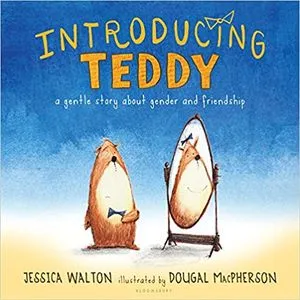
Introducing Teddy: A Gentle Story about Gender and Friendship, written by Jess Walton and illustrated by Dougal MacPherson
This delivers just what the title promises. Errol notices that Teddy, his best friend, seems to be sad. Errol asks what’s wrong, and Teddy responds that she wants to be known as Tilly Teddy now—she knows she’s a girl Teddy. Tilly is afraid, though, that she will lose her friends if she tells them. Errol assures her that she is still his best friend, and he just wants her to be happy. This is a cute, gentle introduction to people transitioning.
When Aidan Became a Brother, written by Kyle Lukoff and illustrated by Kaylani Juanita
Yes, this is another Lukoff title, but I couldn’t pick just one! This one takes place after Aidan has already come out as trans. Instead, the focus is on Aidan welcoming a new sibling into their family. He is worried both about typical new sibling fears and his concerns about the baby being gendered before they’re even born–he knows what it’s like to be misgendered. It shows that life is always a series of transitions and that can be source of joy! I love the illustration style in this one, and this is another trans boy book by a trans guy author.
My Rainbow, written by Trinity and DeShanna Neal and illustrated by Art Twink
This autobiographical picture book is by a “mother-daughter advocate duo,” and it follows a mother trying to find the perfect rainbow wig for her trans daughter. This isn’t an explainer of being trans: it assumes you already have that foundation. Instead, it’s about the mother character trying to find ways to affirm her kid. The daughter is also Black and autistic, which is nice to see: it’s still very rare to see intersectional representation like this, whether in picture books or books in general! I love the colorful illustrations.
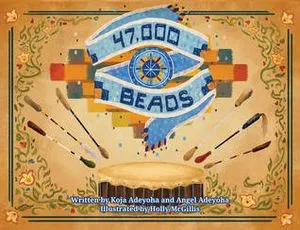
47,000 Beads, written by Koja Adeyoha and Angel Adeyoha and illustrated by Holly McGillis
I could have filled this list with Flamingo Rampant books, because I love them all. It’s described as a “micropress with a mission—to produce feminist, racially diverse, LGBTQ positive children’s books.” All of their books not only depict LGBTQ+ kids and families, but they are also racially and culturally diverse (including different religions), as well as depicting people with disabilities. I’ve picked 47,000 Beads because it’s the first picture book I’ve seen to represent a Two-Spirit kid (it’s also written by a Two-Spirit Lakota person). The main character, Peyton, is struggling, because she feels like she doesn’t fit the gender expectations of her. Her family, recognizing this struggle, all come together to prepare a gift to show Peyton that they accept her and teach her about what being Two-Spirit means. This is a book I think every elementary school library should have.
The Boy & the Bindi, written by Vivek Shraya and illustrated by Rajni Perera
A young boy is fascinated by his mother’s bindi. She explains what it is and its cultural significance, and when he asks for one of his own, she happily gives him one in his own color—yellow. He is allowed to express himself and his difference through the bindi, while participating in his culture and history. Like many of the books on this list, it represents diversity on multiple axes, so this could just as easily be read to learn about cultural diversity.
Prince & Knight, written by Daniel Haack and illustrated by Stevie Lewis
I couldn’t write about LGBTQIA+ kids’ books without mentioning Prince & Knight, a fairy tale update in the tradition of King & King. The prince’s parents want to find him a bride, but all the princesses they introduce him to don’t strike his fancy. He’s looking for something special in a partner. When a dragon attacks his kingdom and he is fighting to defend it, he is rescued by a knight in shining armor, and they instantly fall in love. They marry and live happily ever after. This is a charming, Disney-esque fairy tale story that should help combat the heteronormativity of the typical book in the genre.
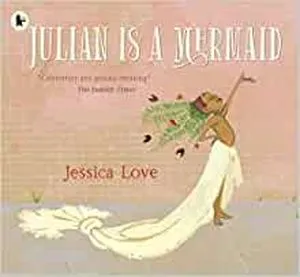
Julián Is a Mermaid, written and illustrated by Jessica Love
Personally, I can’t resist that cover. The sheer confidence and style that Julián exudes makes the book for me. When Julián sees three women on the subway dressed up as mermaids, it inspires him to go home and make his own costume, but when his Abuela finds him, he’s nervous about how she’ll react, both to the mess he’s made and to how he looks. Instead of chastising him, his Abuela takes him to see a community he didn’t know he was part of: the Mermaid Parade. (Which I wasn’t aware of, and will now be looking at endless pictures of.) Also check out the sequel: Julián at the Wedding, which takes place at a wedding between two brides and introduces another gender nonconforming kid character!
The Answer (Steven Universe), written by Rebecca Sugar and illustrated by Tiffany Ford and Elle Michalka
I’m a big Steven Universe fan, and I’ll admit, I’m not sure how this would translate if you’ve never seen the show. It is absolutely beautiful, though, and portrays the love story of Ruby and Sapphire, two gems (aliens) whose love allows them to become someone new together: Garnet. Their relationship is not accepted in their society, but they find a place to be themselves, one that celebrates their love. Alongside the story are mini versions of Sapphire and Ruby reacting to the events as they unfold, providing commentary and contrast. The style is reminiscent of a classic Little Golden Book. Not only did I have to include this because I, personally, love it, but it’s also—as far as I’ve seen—the only picture to have a love story between two women (or girls). There are books about kids with two mothers, but there doesn’t seem to be many sapphic equivalents to Prince & Knight, King & King, And Tango Makes Three, and Marlon Bundo. (Some digging has brought up Maiden Voyage by Jaimee Poipoi, but I haven’t read it yet, so I can’t give a full recommendation yet!)
Morris Micklewhite and the Tangerine Dress, written by Christine Baldacchino and illustrated by Isabelle Malenfant
Morris loves make-believe and dress up, and his favorite thing to dress up in is his tangerine dress, in which he has many adventures. Unfortunately, the other kids don’t understand why a boy would wear a dress. After staying home a day, Morris comes back and answers the claim of “Boys don’t wear dresses!” with “This boy does.” This isn’t necessarily a book about being trans, but about questioning gender roles and making space for kids to express themselves and their gender however they see fit.
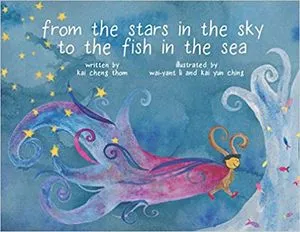
From the Stars in the Sky to the Fish in the Sea, written by Kai Cheng Thom and illustrated by Kai Yun Ching and Wai-Yant Li
Kai Cheng Thom’s memoir Fierce Femmes and Notorious Liars is one of my favorite books, so I had to pick up her picture book. This is a story about a kid who is a shapeshifter. Born when both the sun and moon were in the sky, they delight in being a little bit of everything. They grow wings or fins or horns or all at once. No matter what they look like, their mother always reassures them that she’ll love them no matter what. When the kid goes to school and gets teased, they stop shapeshifting, only to find that their classmates want them to be either a boy or a girl. When the kid asks their mom if the other kids will accept them, she gives a refreshing answer of “I don’t know,” but reassures them that they’ll always be loved anyway. Going back to school as their glittery, shape-shifting, non-binary self, they manage to find some commonalities after all, and they teach the other kids how to develop their own wings, fins, and horns. A mix of non-binary representation and metaphor of imagination and difference in general, this works on both levels.
Children’s Books about Diversity Featuring Disabled or Neurodiverse Representation and Inclusion
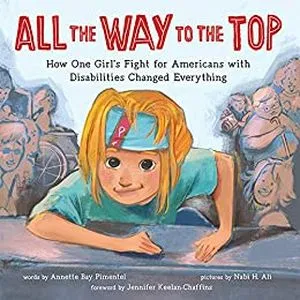
All the Way to the Top: How One Girl’s Fight for Americans with Disabilities Changed Everything, written by Annette Bay Pimentel and illustrated by Nabi Ali
This is a biography of Jennifer Keelan-Chaffins, a disability activist who began when she was just six years old. You might recognize her from Crip Camp, a Netflix documentary produced by Michelle and Barack Obama’s production company. (I highly recommend it!) To advocate for the Americans with Disability act, wheelchair users–including Keelan-Chaffins–crawled up the steps of the Capital building in protest called the Capital Crawl. It gained a lot of press and attention, and eventually, the act was passed! This sheds light on history that is rarely taught in schools.
Just Ask!: Be Different, Be Brave, Be You, written by Sonia Sotomayor and illustrated by Rafael López
This is written by Sonia Sotomayer, the first Latina Supreme Court Justice! When she was diagnosed with diabetes as a child, she was bothered by people staring or seeming uncomfortable when she did things like check her blood sugar levels or give herself a shot. She wished people would just ask! This book covers a range of disabilities, including characters with Down Syndrome, dyslexia, autism, nut allergies, and much more. Together, they plant a garden together, with the message that it would be boring if the garden only had one type of plant! This is a great addition to a still quite small amount of children’s books portraying disabled characters, but The Conscious Kid does offer some drawbacks: this book doesn’t actually use the word disability or disabled. It also mentions (in a long list of resources) Autism Speaks, an organization rejected by autistic communities for speaking over autistic people and perpetuating harmful views of autism. Because there are so few picture books introducing disability as a subject, I think this is still worthwhile to start a conversation, but be prepared to supplement it.
Moses Goes to a Concert, written and illustrated by Isaac Millman
Moses and the rest of his class are Deaf, and they communicate with each other using sign language. They are going on a field trip to a concert, which Moses is excited about, because he loves playing his drum. When they get there, though, their teacher has a surprise: the percussionist is also Deaf, and feels the vibrations of the music through her feet. During the concert, the students hold onto balloons to feel the music in their bodies. This book also has ASL throughout and includes an index in the back with the ASL alphabet.
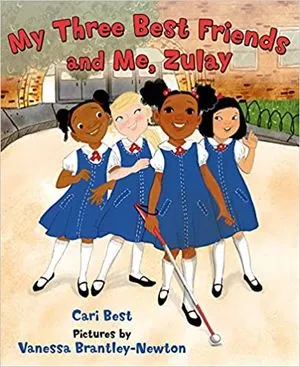
My Three Best Friends and Me, Zulay, written by by Cari Best and illustrated by Vanessa Brantley-Newton
Zulay and her three best friends are in first grade together. They’re all excited about the upcoming Field Day, but the class is surprised when Zulay wants to run a race, because she’s blind. With some help and practice, though, she shows them how it’s possible! This book doesn’t state that Zulay is blind: kids will have to use clues to figure it out. Zulay is also Black, and we’re still lacking in book representing disabled kids of color. I also appreciate that it shows Zulay thriving in a group of friends! I’m going to direct you to a Goodreads review from a young blind girl dictated to her dad, because it’s adorable and shows how needed these books are.
What Happened to You? written by James Catchpole and illustrated by Karen George
Joe is tired of everyone asking what happened to his leg. He wants to play on the playground with other kids, not answer the same rude question over and over. This is based on the other’s own childhood experiences, and it claims to be “The first ever picture book addressing how a disabled child might want to be spoken to.” It tackles this topic with humor and playfulness, showing that Joe is more than just a single story.
When Charley Met Emma, written by Amy Webb and illustrated by Merrilee Liddiard
Emma is a girl with limb differences (she doesn’t have hands) who uses a wheelchair. When Charley meets her on the playground, he remembers his mother saying, “Different isn’t bad, sad, or strange–different is just different and different is okay!” They soon become friends. Although I would rather that this was from Emma’s perspective, there are still very few children’s books portraying children with limb differences, so I think this is a great addition. It also has information in the back for parents, guardians, and teachers about how to help kids know what is appropriate to say to physically disabled kids.
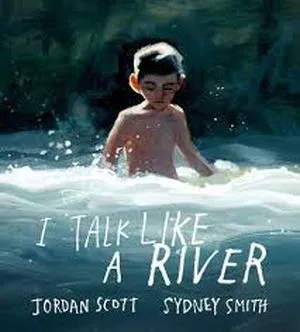
I Talk Like a River, written by Jordan Scott and illustrated by Sydney Smith
The boy in this story is frustrated by a “bad speech day.” He hides in the back of the room, hoping his teacher won’t call on him. When he is chosen to speak, he feels the whole classes’ eyes on him. His father tells him, “You see how that water moves, son? That’s how you speak.” Although it doesn’t fix all his problems, he’s comforted that even water stutters sometimes. The strength of this story is the breathtaking illustrations. It shouldn’t just be reserved for teaching about stuttering: it’s a gorgeous read that is also an entry point into talking about anxiety and feeling different–how we can cope and how we can help others feeling that way.
Why Johnny Doesn’t Flap: NT is OK! written by Clay Morton and Gail Morton, and illustrated by Alex Merry
A parody of the typical “Here’s my friend with a disability” picture book, this story centers an autistic child trying to explain his friend Johnny, who is neurotypical (NT). He acts erratically, his speech patterns are confusing, and he doesn’t have a properly maintained special interest, but that’s okay! They can still be friends, even if they are different. This achieves the same ends as the kind of book it parodies, but by centering autistic kids, it prevents the othering of neurodiverse readers.
Noah Chases the Wind, written by Michelle Worthington and illustrated by Joseph Cowman
“Noah is different. He sees, hears, feels, and thinks in ways that other people don’t always understand, and he asks a lot of questions along the way.” When Noah can’t find an answer in his books about where the wind goes, he sets off on adventure to find out himself. Although this book doesn’t directly name Noah as autistic or as having a sensory processing disorder, it does serve as a good foundation for talking about neurodiversity as well as how people thinking differently is one of the many ways we are all unique and have our own perspectives to share.
Other Children’s Books About Diversity and Inclusion
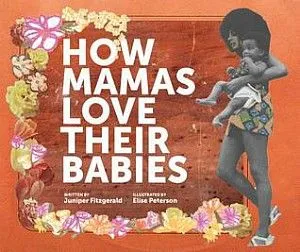
How Mamas Love Their Babies, written by Juniper Fitzgerald and illustrated by Elise Peterson
This book shows how mamas use their bodies to take care of their babies: through (sometimes) breastfeeding, (sometimes) being pregnant, and through the labor they perform: “Some mamas stay home with their babies all day long. It’s hard work!” “Some mamas dance all night long in special shows. It’s hard work!” The depiction of some mothers as sex workers is what makes this truly groundbreaking, but it’s also notable just for the diversity of experiences, class, and races shown. The collage style illustrations feature photos of mothers taking care of their children, whether by feeding them, protesting for their rights, or making money by cleaning houses.
On Our Street: Our First Talk about Poverty, written by Jillian Roberts and illustrated by Jane Heinrichs
On Our Street acts as a gentle introduction to kids asking about poverty and homelessness. It is written from a middle+ class perspective, with an us/them framing, so it’s not the best choice for a classroom that might include some students living in poverty. It also doesn’t mention how race factors into poverty. That said, it does mention mental illness and refugee status. The subject matter is depicted in a mix of illustrations and photos, so it does show what poverty and homelessness really looks like. For kids first noticing homelessness and poverty in the world around them, this is a good first step in introducing them to the topic.
Of course, these are far from the only children’s books about diversity! I made the parameters for this post fairly narrow, and often just picked my favorites that covered the same subject matter. There are many, many more children’s books with diverse characters that aren’t specifically about teaching diversity, too. If you haven’t found exactly what you’re looking for, let us know if there is another facet of this topic you’d like us to cover!
If you liked this post, also check out:
- The Suffocating Homogeneity of Bestselling Children’s Books
- Children’s Books for the Resistance
- Children’s Books that Center a Disabled Character But Not Their Disability
- 25 LGBT Children’s Books for the Little Readers in Your Life
- 52 Incredible Picture Book Biographies of Black People Creating and Leading
- Indigenous Voices for Little Ears: 15 Books About Native American Tradition and History for Children













